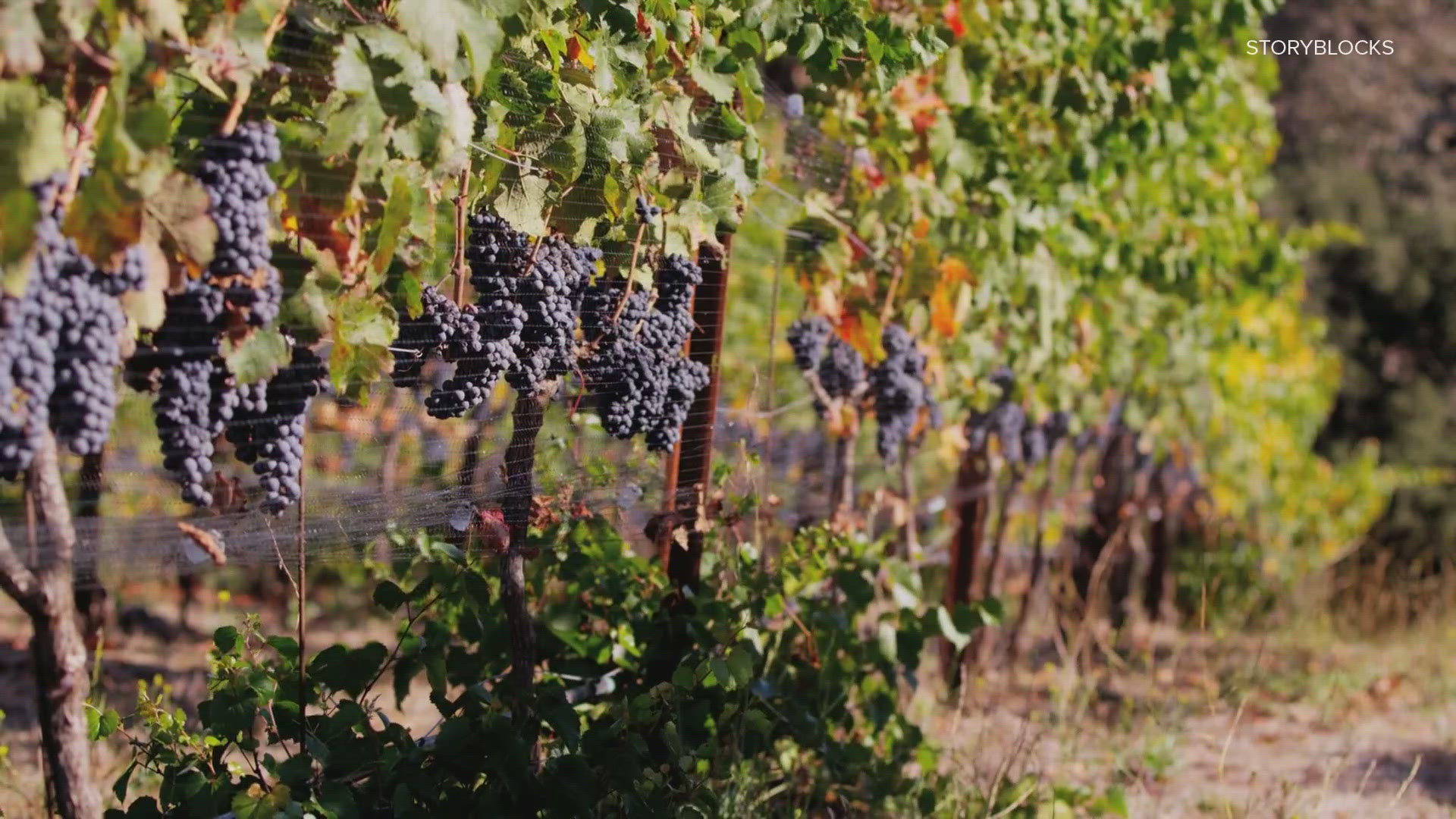MISSOURI, USA — September is Missouri Wine Month and the perfect time to savor local vineyards' rich history and unique tastes.
Harvest season for the state's grapes begins in mid-August and runs through the end of fall, and with nearly 130 variable wine destinations to visit across the state, there's a perfect wine for everyone. Some of these destinations, however, offer something even deeper than their wine flavors.
Many of the state's wineries tell the story of Missouri saving the world of wine from a devastating plague. The legend goes that vineyards around the world were nearly sucked dry before two Missourian heroes stepped in, figured out the problem, and offered a solution that stopped the blight in its tracks.
But how much truth is in the tale? We dug into the story and spoke to experts to VERIFY.
The question
Did Missouri really save the world's wine from being destroyed?
Our sources
- Allison Miller: Member and principal investigator at Saint Louis University's Danforth Plant Science Center
- Dean Volenberg: Viticulture Program Leader at the University of Missouri's Grape and Wine Institute
- Missouri Botanical Garden
The answer
Yes, Missouri did save the worldwide wine industry from an insect-driven blight.
What we found
Numerous sources confirmed with 5 On Your Side that the tale is indeed real, and cemented Missouri as the United States' most important site for advancements in the fight against grape disease and adaptability throughout the wine industry.
Trouble began when a small insect, known as phylloxera, hitched a ride from the American Midwest to Europe's vineyards in the early 1860s. The aphid would go on to wipe out an estimated one-third of vineyards across France, South Africa, New Zealand, Australia, and California over two decades, and threatened to destroy the entire industry if left to fester for another 10 years.
"Phylloxera lives part of its life below ground where it chews on roots," Miller said. "When this little aphid was introduced into Europe in the mid-1800s, and it escaped into the vineyards with European vines that never experienced before, it was terrible. Researchers estimate around 60% of European vines were killed as these little aphids started chomping on the roots, and the roots just couldn't handle it."
The issue was that no one knew the insects were the source of the destruction. Phylloxera is barely perceptible to the naked eye and, due to its underground habitat and its ability to reproduce asexually exponentially, the insect wrought destruction completely unnoticed. Vineyards continued to die suddenly over 20 years and with no end in sight, many thought wine was coming to an end worldwide.
In steps the Missourian heroes. The Missouri Botanical Garden's (MoBOT) first advisor, Dr. George Engelmann, came to St. Louis in 1835 and immediately left his mark of conservation in the state. Along with helping MoBOT founder Henry Shaw turn the Garden into a scientific research institution, he also spent a significant time researching American grapevines throughout Missouri.
"Engelmann spent a great deal of time studying grapes, and specifically native American grapes, writing a number of publications on the varieties and classifications of grape species," a MoBOT blog post reads. "Today, the Garden’s Center for Home Gardening has a plot of several American grapevine plants and hybrids growing as part of a research project started and managed by botanist Dr. Allison Miller."
When Europe's vineyards began dying en masse, Engelmann joined forces with the first Missouri State Entomologist, Charles Valentine Riley, and together discovered phylloxera was the culprit after noticing North American grapevines weren't plagued by the same issues. The North American grapes also became the solution to the blight.
"Native North American grapevines evolved resistance to that damage. European grapevines, which did not evolve in the presence of this aphid, never evolved that resistance," Miller said. "Through a lot of research and international collaboration between researchers in France and Missouri...figured out why the vines in Europe were being destroyed and they figured out they could graft European grapevines to North American root systems. It was a best-of-both-worlds situation where you would have the resistance and resilience of North American root systems to phylloxera...and you would have the top part of the plant that's making leaves and fruits that are the same variety Europeans wanted."
Grafting, the deliberate fusion of two plants, is a thousands-of-years-old practice used to cultivate some of the earliest fig, olive, pomegranate, and date palm orchards, according to MoBOT. Grafting in North America was widely used in apple orchards, becoming essential to colonizers during westward expansion.
The grafting solution was an incredible success, and allowed Europe's wine industry to slowly recover.
"Almost a decade later, their solution proved promising and would save the French wine industry and others as the pest spread," MoBOT said. "Now found throughout the world, the same solution to control the Phylloxera pest continues to this day."
We can VERIFY: Yes, Missouri saved the worldwide wine industry from an insect blight in the 1860s.
VERIFY
Do you have a question you want us to VERIFY? Email verify@ksdk.com with your claim.
Craving more VERIFY? See every St. Louis-area claim we've looked into below.












